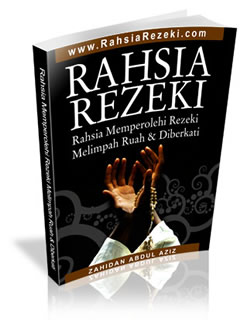
Prophecies : Prophet Muhammad in the Old Testament ?
In the Name of Allah,the Most Beneficient and Most Merciful. All Praises be to Allah, Lord of the Universe.
It is known by us that there were series of prophets that came to teach us religion. In Islam, we believe in the continuation of the teaching of the prophets. That we Muslims believe that all the Prophets (p.b.u.t.) they came with the purpose of establishing the Kingdom of God in God’s term. That the prophets were bringing not only religions, but a set of beliefs that holding us, and also the way of life that we must follow.
In Islam, we believe in all of the prophets that preceded Prophet Muhammad (p.b.u.h). From Adam until the time of Jesus (Pbut). And we also believe in their teaching, and also the scriptures that were given to them.
Islam is the religion of monotheism, so did the Judaism and Christianity, before some irresponsible priests and rabbis came to manipulate the original teaching in fulfilling their own will. Many were politically motivated.
In the Old Testament, Book of Exodus 20:1, God said unto Moses,
"I am the Lord thy God, thou shalt not have any other Gods before me. Thou shalt not make unto thee any graven image, or any likeness of anything that is in Heaven above, or that which is in the Earth beneath, or that which is in the water under the Earth. Thou shalt not bow down thy self to them nor serve them."
The words I quoted from the Bible (Exodus 20:1), above, are well known to all those who read the Bible. There is, however, a difference between knowledge and perception. One may know these words having heard someone say them or having heard someone read them from somewhere, or perhaps because one read them one's self, and yet have no perception of their meaning.
I say this because many people who call themselves "believers" have their idols of different shapes, different makes and different sizes. Some hang their idols on their necks, others place them in their churches and others hang them on the walls of their houses. They will all argue that they do not worship these things hanging on their necks, placed in their churches or hanging on their walls in spite of the fact that those who have statues in their churches kneel before these statues and pray: "No we do not worship them; they are merely pictures to remind us, if I have my deceased brother's picture on the wall it brings to memory what my brother looked like." They argue. And the Cross? "It reminds me of my saviour", they say.
The words in Exodus 20:1 contain the fullness and totality of a true belief in God. A
belief in one God, the creator of the Heavens and the Earth. These words, which God
uttered, are directed at all people, believers and non-believers alike. And it then
turns out that the meaning of these words will depend on who one considers God to
be the creator of everything". This was the concept of God in the whole of the prior to the introduction of Christianity. It is a belief similar to the Muslim belief. They also believe in one God who has no Partners; who alone is worthy of all worship and praise.
When the Jews in Medinah wanted Prophet Muhammad (PBUH) to describe to them what God looks like, they questioned him about the likeness of God. The following words were revealed, by God, through him (in Arabic
"Say (O Prophet) God is one, God is eternal, he begets not nor is
he begotten and there is nothing like unto him".
(Holy Quran: Chapter 112)
Many inherit the religion from their parents. Very few people question their parent's
religion and each generation passes their religion to the following generation without
any thought as to whether it has any basis or, if it does, whether the basis can be
supported by reliable authority.
That which our parents believed in we also believe in. If our parents believed in phantoms we believe in phantoms, and do not realise that we believe in phantoms. If those phantoms were called God by our parents we also call those phantoms God; and teach our children to worship those phantoms as that is the belief that was implanted in us in our childhood; a belief that has grown deep roots in our hearts. Phantom beliefs do have roots in people's hearts even where
there are clear signs warning them about the futility of those beliefs. These phantom beliefs which have grown deep roots will have their phantom foundations or phantom bases, which will be held onto as though they were genuine, in spite of proof to the contrary.
Relationship
In all three Abrahimics religions, there are scriptures and revelations in writing forms available. The issue of genuineness is being debated for centuries. But, the basic principles that the all three religions share the common heritage is something that we need to discuss.
Islam happened to be the youngest amongst the three brothers. However, we all know that the three shares the similar basic languages and Semitic heritages. The fact that these three religions arose in the Arabic peninsular and share a lot in common is undeniable.
There are also prophesies related to one another. Prophecy is something that being foretold by the Prophets about what the future seems to be. In the Old Testament, many prophecies cited by Prophet Moses (PBUH) in relation to the event that will come in the future. Likewise, in the New Testament, there are also prophecies uttered by Jesus (PBUH) in announcing to his disciples the future event.
And, surprisingly, Islam had fulfilling all of the prophecies through Prophet Muhammad (PBUH). And in this writing, I will show one of the example of the Prophecies uttered in the Old Testament.
"I shall raise them up a prophet like you from among their brethren and I shall put my words in his mouth, and he shall speak to them all that I shall command him."
(Deuteronomy 18:18)
There are three identifying signs that God almighty has placed for us to identify this Prophet:
(Penulis Tamu: Bro Marhaein)



























1 comments:
OK that sounds pretty reaosnable to me dude.
jess
www.private-surfing.be.tc
Post a Comment